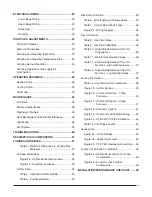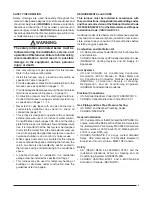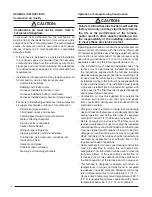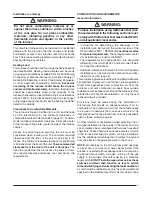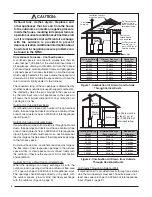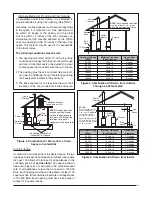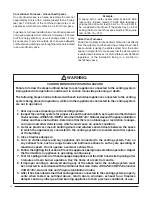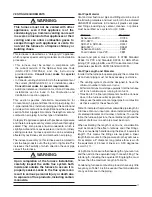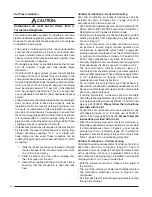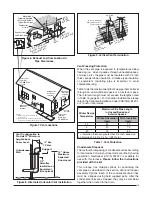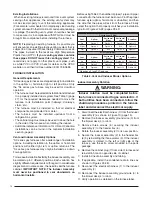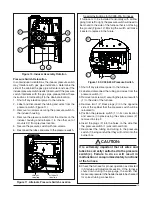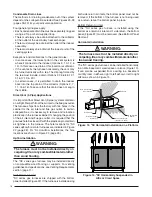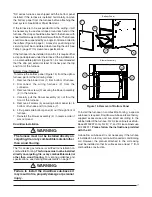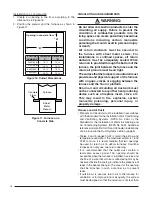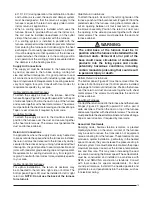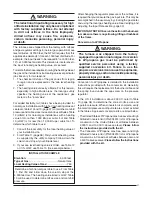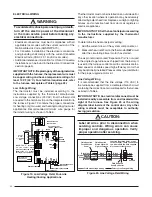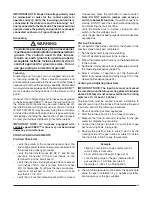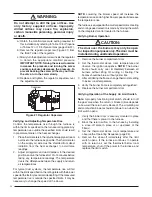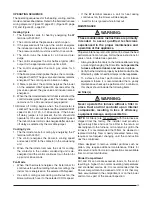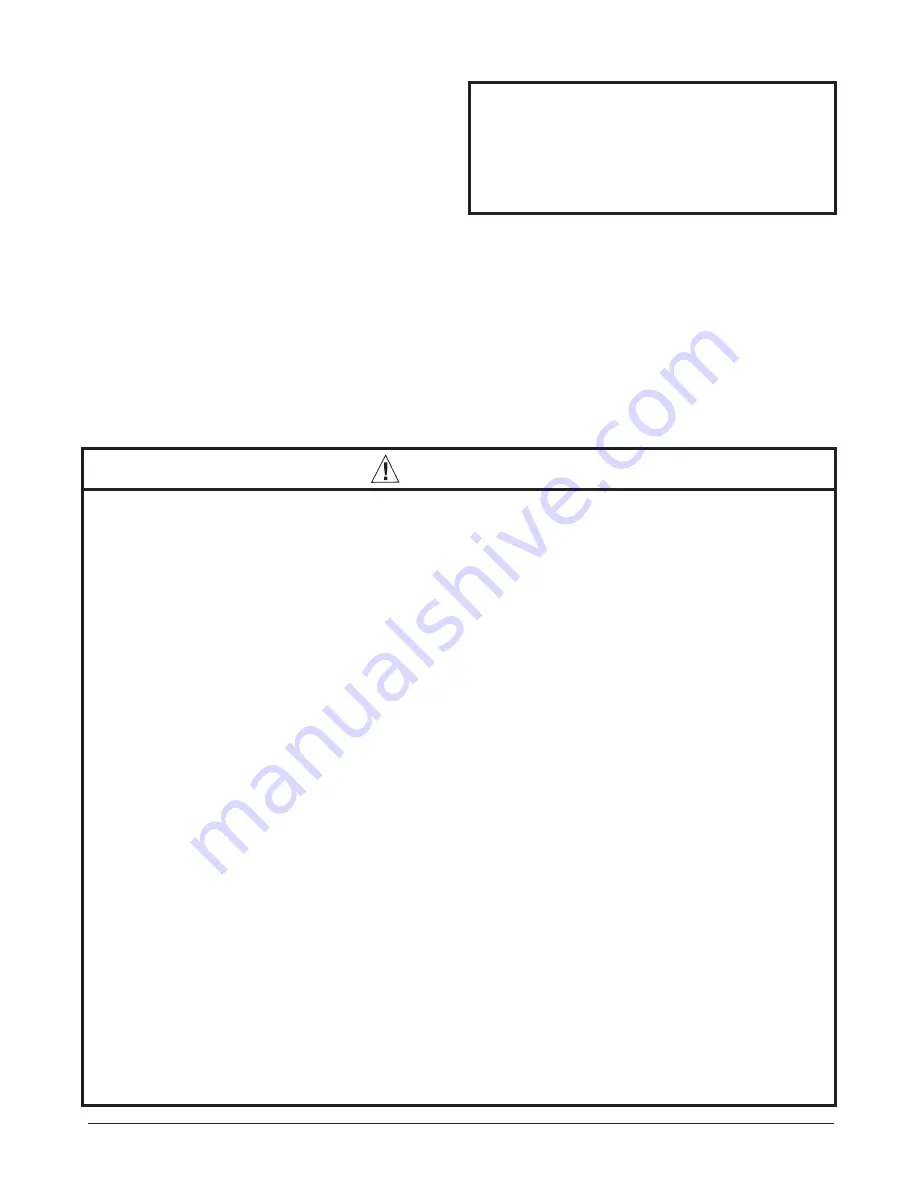
10
Conventional Furnaces - Unconfi ned Spaces
An unconfi ned space is an area including all rooms not
separated by doors with a volume greater than 50 cubic
feet per 1,000 Btuh of the combined input rates of all
appliances which draw combustion air from that space.
In general, a furnace installed in an unconfi ned space will
not require outside air for combustion. However, in homes
built for energy effi ciency (low air change rates), it may
be necessary to provide outside air to ensure adequate
combustion and venting, even though the furnace is located
in an unconfi ned space.
WARNING:
CARBON MONOXIDE POISONING HAZARD
Failure to follow the steps outlined below for each appliance connected to the venting system
being placed into operation could result in carbon monoxide poisoning or death.
The following steps shall be followed with each individual appliance connected to the venting
system being placed in operation, while all other appliances connected to the venting system
are not in operation:
1. Seal any unused openings in the venting system.
2. Inspect the venting system for proper size and horizontal pitch, as required in the
National
Fuel Gas Code, ANSI Z223. 1/NFPA 54 or the CSA B149.1, Natural Gas and Propane Installation
Codes
and these instructions. Determine that there is no blockage or restriction, leakage,
corrosion and other defi ciencies which could cause an unsafe condition.
3. As far as practical, close all building doors and windows and all doors between the space
in which the appliance(s) connected to the venting system are located and other spaces
of the building.
4. Close fi replace dampers.
5. Turn on clothes dryers and any appliance not connected to the venting system. Turn on
any exhaust fans, such as range hoods and bathroom exhausts, so they are operating at
maximum speed. Do not operate a summer exhaust fan.
6. Follow the lighting instructions. Place the appliance being inspected into operation. Adjust
the thermostat so appliance is operating continuously.
7. Test for spillage from draft hood equipped appliances at the draft hood relief opening after
5 minutes of main burner operation. Use the fl ame of a match or candle.
8. If improper venting is observed during any of the above tests, the venting system must
be corrected in accordance with the
National Fuel Gas Code, ANSI Z223.1/NFPA 54 and/or
CSA B149.1, Natural Gas and Propane Installation Codes
.
9. After it has been determined that each appliance connected to the venting system properly
vents when tested as outlined above, return doors, windows, exhaust fans, fi replace
dampers and any other gas-fi red burning appliance to their previous conditions of use.
Direct Vent Furnaces
Direct Vent (2-pipe) furnaces draw combustion air directly
from the outdoors and then vent the combustion products
back outside, isolating the entire system from the indoor
space. It is important to make sure that the whole system
is sealed and clearances to combustibles are maintained
regardless of the installation being in a confi ned or
unconfi ned space.
Example
:
A space with a water heater rated at 45,000 Btuh
input and a furnace rated at 75,000 Btuh requires a
volume of 6,000 cubic feet [50 x (45 + 75) = 6,000] to
be considered unconfi ned. If the space has an 8 foot
ceiling, the fl oor area of the space must be 750 square
feet (6,000 / 8 = 750).



